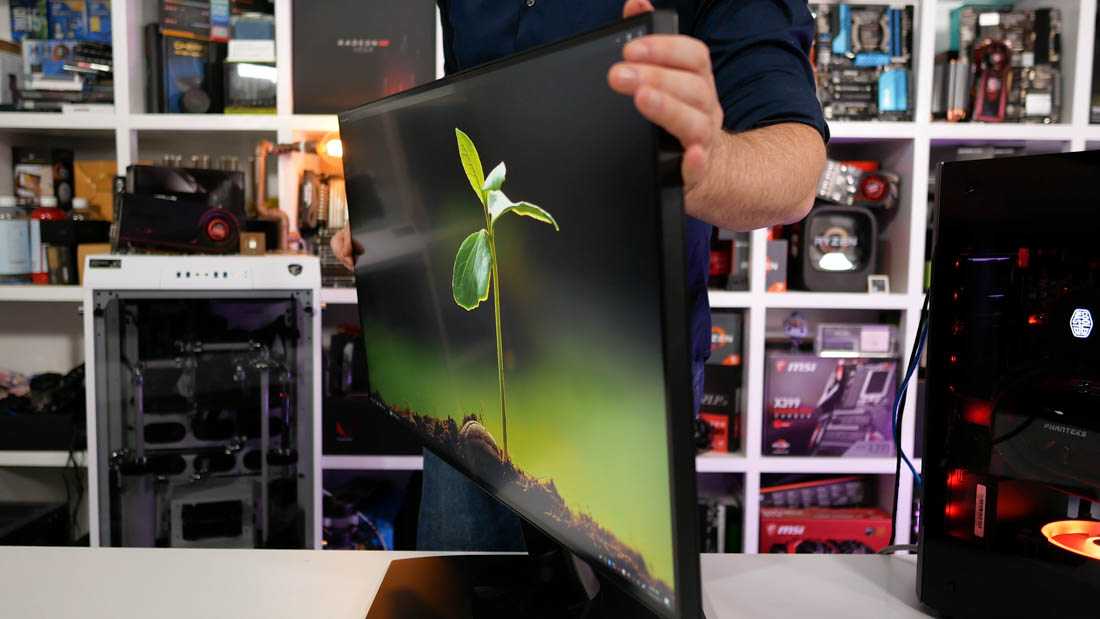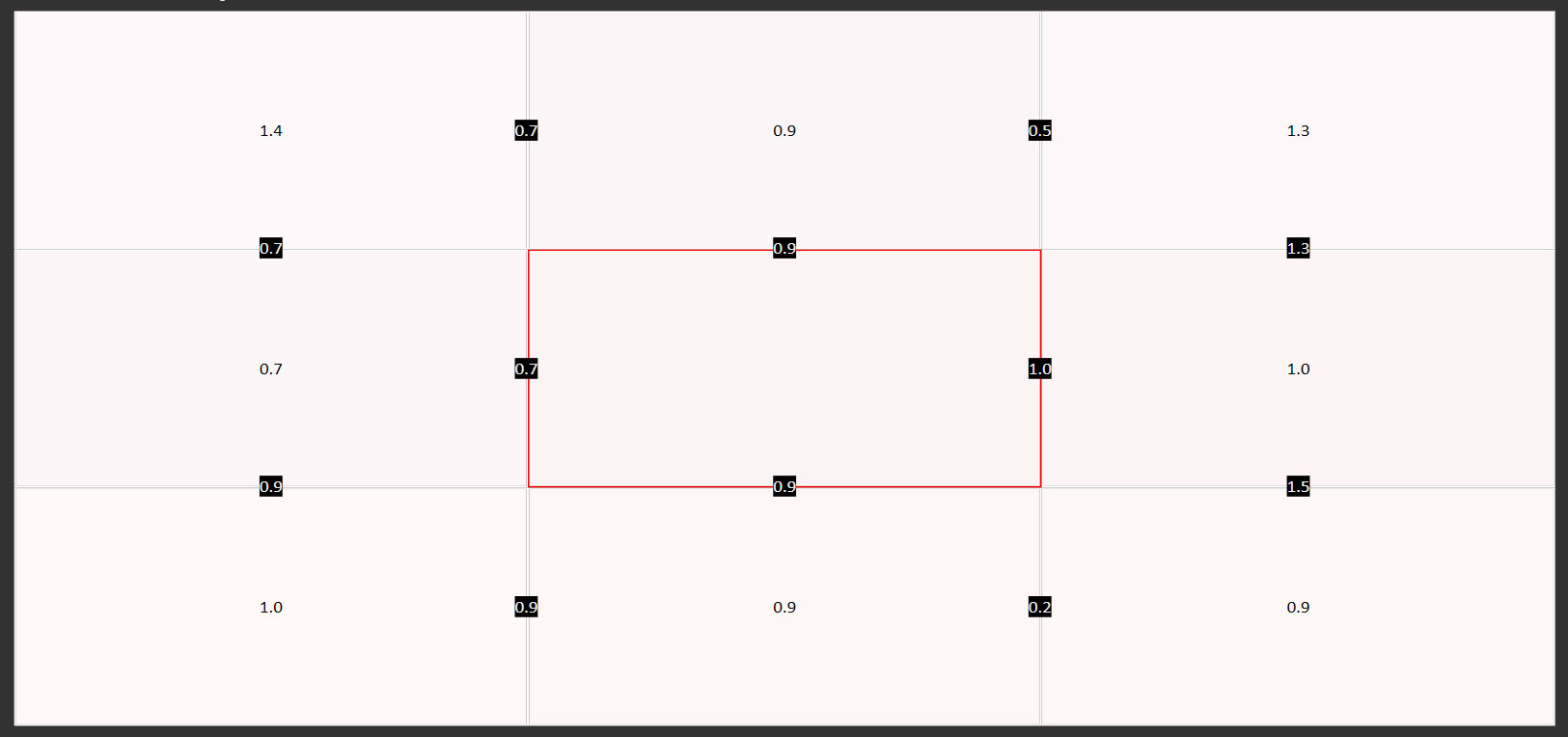When you're a creative professional in need of color accuracy, there are many high quality options available on the market. We're looking at one of these monitors today, the ViewSonic VP3268, which is one of the highest-end monitors ViewSonic sells. It's a large 32-inch 3840 x 2160 IPS LCD, complete with unique features geared specifically towards professionals.
To make things clear, this monitor isn't designed for gaming. That's not to say you can't use it for that purpose, but you'd probably be better served with a similar display for half the price. The lack of a gaming focus is seen in the spec sheet, too, as this panel does not support variable refresh technology like FreeSync, and its 14ms grey-to-grey response time is fairly slow, certainly slower than I'd want for gaming.
What you do get, though, is an excellent set of professional features. Each VP3268 is individually calibrated at the factory, with DeltaE levels below 2.0, to four commonly used color spaces: sRGB, Rec. 709, SMPTE-C, and EBU. Each color space gets its own display mode accessible through the on screen display, and each comes with a detailed calibration report in the box so you can verify whether the display is up to scratch.
The VP3268 also uses a true 8-bit panel with support for up to a 14-bit look up table (LUT), and support for 10-bit through FRC. It's not a true 10-bit display, but then neither is anything priced below $2000. The panel itself is an IPS LCD with a 1300:1 contrast ratio, 350 nits peak brightness and what ViewSonic claims is excellent uniformity: another key feature for professionals.
The monitor even supports HDR, though this feature isn't advertised and that's probably for a good reason. More on that later.
I really like the design of this display, and that's because it gets the most important thing right: bezel size. The bezels around the VP3268 on all sides are extremely thin, which helps make the expansive 32-inch panel feel even larger. It also helps when you want to use multiple monitors - something creative professionals almost always do - as you can put two of these displays side by side with a very small gap between.
As far as construction is concerned, the monitor is well built but it doesn't go overboard with fancy materials or unnecessary flair. Most of the monitor uses basic plastic, and it's somewhat annoying that parts of the stand use a glossy dust-attracting finish. The design looks good though, and won't look out of place on a professional's desk. Did I mention the bezels are really slim? Yeah that's still the best part of the design.
All the stand adjustability you'd want is included here, such as 130mm of height adjustment, 120 degrees of swivel, 90-degree pivot so you can use the monitor in a portrait orientation, and a small though serviceable amount of tilt. And of course you can VESA mount it if you desire.
What about connectivity? Well there's no shortage of display inputs: two HDMI 2.0 ports, a full-sized DisplayPort, and also a mini-DisplayPort. Mini-DP is an unusual connector to use here, though I guess it must be useful for some people otherwise ViewSonic wouldn't have included it. There's also a set of 3.5mm audio jacks, one input and one output, allowing you to either use the dual 5W internal speakers, or pass through HDMI or DisplayPort audio. Oh, and there's a four port USB 3.0 hub too.
On a less positive note, the on screen display is hard to control as it uses basic buttons rather than a directional toggle. If you want to change color profile, that can be achieved relatively easily, but if you want to fine tune any other controls, it's a difficult slog through menus that aren't really designed for these sort of controls.
Most of the controls in the OSD are relatively common inclusions; things such as brightness and contrast sliders, color temperature controls, and settings for overdrive and so forth. While I didn't find ghosting to be too much of an issue with this display, despite the slow 14ms response times, switching overdrive to a medium setting did improve things. In fact ViewSonic even suggests you can halve the response times with an appropriate overdrive setting.
It's not surprising that response times are less than ideal, because ViewSonic has opted for a professional-grade IPS LCD rather than a faster TN. What you do get with the IPS panel is excellent viewing angles in all directions, helped through an anti-glare coating. The 3840 x 2160 resolution this panel uses isn't all that new these days, but it's always nice to see such a sharp and crisp presentation at this size. I am still waiting on 4K displays with greater than 60 Hz refresh rates to hit the market - they're supposed to be coming soon - though for now the VP3268 hits the maximum of 60 Hz that we've seen at this resolution.
In my testing, the display hit the marks that ViewSonic lists in their specification sheet for brightness and contrast. When cranked up to the maximum, the VP3268 achieved just a bit over 350 nits in my testing, while contrast was around 1460:1, higher than the 1300:1 ViewSonic states. This is maintained well at lower brightness levels too, falling around 1400:1 as you move down to 120 nits.
Uniformity is outstanding, exactly as you'd expect from a professional-grade display. No backlight bleed to speak of, and a sub-1.5 deltaE color difference relative to the center. Most quadrants are actually a sub-1.0 dE difference and this improves at darker greyscale levels. I haven't yet seen a cheaper or gaming-focused monitor that achieves similar levels of uniformity, so it's clear this is one thing you'll only get with a more expensive monitor like this.






